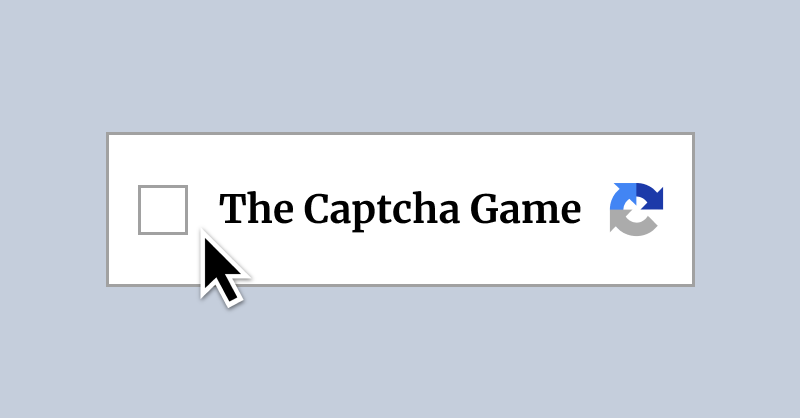Every routine hides a judgment
Keep exploring
Keep the momentum going with more arena racers, action trials, and puzzle standouts.

Drive Asgore’s wagon through meme chaos

The Captcha Game

Royaledle

Fireboy and Watergirl: Light Temple

Sprint, build, and battle in one flexible sandbox

Punch up the org chart in minutes

Hold the wheelie, keep the score climbing

Pour, match, and de-stress with color logic

Turn domino dots into crisp daily wins

Design, drive, iterate—Polytrack turns seconds into trophies
A clinical routine that measures your humanity
Enter the facility and mind the ledger
Human Expenditure Program is a psychological horror routine where the smallest motions become evidence. You guide Harvey Harvington through a day that looks ordinary on the surface—teeth to brush, food to prepare, medication to sort, a room to tidy—but the space is wired for scrutiny. In Human Expenditure Program, timers tick softly, icons flutter for attention, and a silent ledger waits to interpret what you do, how fast you do it, and whether your choices signal care or indifference. The result is a browser experience that turns basic caretaking into a tense audit, inviting you to question which outcomes you are optimizing for and why. In Human Expenditure Program, your cursor becomes a stethoscope and a signature at the same time, and every click can soothe or condemn.
In Human Expenditure Program, the pacing is deliberate. Short microgames ask for steady hands and calm observation, and each round subtly escalates with new constraints, new sounds, or new UI glitches. One task may request a gentle brush cadence; another may demand precise cuts on a chopping board; a third might ask you to place pills in a weekly tray without mixing dosages. None of these actions feel dramatic, yet they amass a portrait of your priorities. Human Expenditure Program uses that portrait to produce end-of-day reports that read like bureaucratic poetry—measured, cold, and disturbingly plausible.
Human Expenditure Program centers the tension between compassion and throughput. Do you linger to comfort Harvey when he flinches at a noise, or do you finish swiftly to avoid a late penalty? Do you remake a meal that came out slightly overcooked, or accept a minor deduction and move on? The interface will never yell, but it will remember. Human Expenditure Program captures this memory in a numerical hush: bars fill, notes accumulate, and the program’s opinion crystallizes beneath polished surfaces. Your best run may look efficient, but the most humane run might require inefficiency, and that dissonance is the point.
Mechanics that whisper while they judge
Human Expenditure Program layers small systems to produce unease instead of jump scares. The audio design is gentle at first—air filters humming, warm synth pads, a metronome of beeps—but each misstep introduces hairline fractures: a skipped beat, a clipped sample, a sudden compressor swell. Human Expenditure Program couples those sonic hints with minimal UI tremors: a tooltip misaligns by a pixel, a status field refreshes twice, a success checkmark lingers a touch too long. These cues are never loud, yet they are unmistakable if you are paying attention, and in Human Expenditure Program noticing them changes how you approach the next task.
Human Expenditure Program also emphasizes repetition without boredom. The same chores recur, but parameters change: movement speed is adjusted, time windows shrink, or the acceptable error margin tightens. Patterns invite mastery, and mastery invites complacency, which the program exploits. Human Expenditure Program punishes rote clicking as surely as it punishes negligence. To earn favorable language in the nightly brief, you must be present and precise, even when nothing overtly threatens you.
Harvey is the center, but the system is the story
Human Expenditure Program frames Harvey Harvington with warmth: the artwork is pastel, the room is clean, the animations breathe gently. Yet it is the institutional gaze that shapes your behavior. Human Expenditure Program makes you feel the weight of a spreadsheet you cannot see and a committee you cannot meet. If you aim for perfect checkmarks, you may skip the small kindnesses that never surface on a chart; if you deliver those kindnesses, a late bell may chime, and a note may accuse you of poor throughput. Human Expenditure Program is not asking which path is correct—it is asking who gets to define “correct.”
Human Expenditure Program unfolds across short sessions. A full day takes minutes, but it lingers because its verbs are familiar. Everyone has brushed teeth, plated food, straightened a blanket. Human Expenditure Program takes these unremarkable acts and presses them into game logic until your shoulder tenses at a progress ring. You might finish a round flawlessly and still feel uneasy about what the system praised. You might earn a mediocre score and feel proud you stayed with Harvey’s hesitation after a sudden noise. Human Expenditure Program keeps that disquiet alive in your next attempt.
Replay to compare what you value
Human Expenditure Program supports multiple endings informed by a quiet accounting of your priorities. Speed-focused runs surface crisp language around compliance; care-focused runs surface tender, if professionally disapproving, notes. Hybrid runs are the most revealing: they read like a supervisor struggling to categorize a person who refuses to be only one thing. Human Expenditure Program encourages you to try these extremes, then to build a path between them that feels honest. You will recognize inflection points when they arrive: when to redo a dish, when to slow your mouse, when to disregard a timer in favor of eye contact, even if that “eye contact” is a tiny character waiting for you to click away.
Human Expenditure Program is compact but polished for browsers. It loads quickly, saves little, and trusts you to infer the world from sparse text and careful sound. You can finish a cycle on a break, but you will think about it after work. Human Expenditure Program leaves you with sentences like “adequate warmth demonstrated within assigned window” or “unplanned pause noted; outcome positive,” and those sentences nest in your head longer than a jump scare would. The elegance here is discipline: the game resists spectacle in favor of a steady pressure that clarifies your own boundaries.
Tips for your first sessions
Human Expenditure Program rewards attention more than reflex. Read prompts fully. Watch for tempo indicators. If the UI shivers, do not panic; it is a sign, not a catastrophe. Human Expenditure Program will log your hesitation, but it will also log your correction. When cooking, aim for consistency rather than speed spikes. When sorting medication, double-check labels before the final confirmation, because the program values fewer mistakes over fast mistakes. Human Expenditure Program is merciful in its restarts, and an immediate retry often teaches the rhythm better than a perfect first attempt.
Human Expenditure Program never forgets that Harvey is not a test but a person within a fiction. The softer successes—placing a blanket a bit more carefully, waiting an extra beat after a flinch—are not always rewarded numerically, and that friction is intentional. Human Expenditure Program challenges you to decide whether a number should be allowed to define the worth of a gesture. When the day ends and the brief appears, you may see the outline of your values more clearly than you expected.
Play, reflect, and try a different approach
Human Expenditure Program is best experienced twice: once as an efficient operator, once as a patient caretaker. Compare the briefs. Compare how the room sounds in each path. Human Expenditure Program will not scold you for choosing speed, nor will it applaud you loudly for kindness. It will simply tell you what it noticed, and you will fill in the rest. That restraint is the game’s sharpest tool, and it cuts with a paper’s edge.
Human Expenditure Program turns the browser into a microscope. By magnifying routine, it reveals the moral fibers running through daily labor. When you step away, you may wash a real dish or arrange a real pill case with a new awareness of timing and intention. That is the quiet victory of Human Expenditure Program, and it is why a short session can haunt the rest of your day.
Every routine hides a judgment is ready to play
Perform daily care under watchful auditors, master precise mini-tasks, and steer branching reports. Build empathy—or efficiency—to unlock stark endings fast.
Share Every routine hides a judgment
Spread the word, invite friends, or bookmark this page to revisit the story whenever you need it.